This week has seen the summer solstice and the year’s longest day in the Northern Hemisphere. It’s been a beautifully sunny week and I’ve been admiring plants best described as sun-worshippers, including alpines, sweet peas and roses. I’ve also been taking the opportunity to position my armillary sphere accurately.
Positioning my armillary sphere

I bought an armillary sphere just over two years ago to add a bit of interest to a bed in the centre of my rose garden. It’s a type of sundial. A friend sells these through her garden pots and accessories company Beaver’s Pots.
I have waited two years to position it accurately. It is possible to do this at any time of year with the assistance of compasses and due attention to the difference between compass and magnetic north. However, I have read the instructions of how to do this numerous times and my brain fogs over.

Far easier is to wait until the summer solstice, when the sun is directly overhead at midday and position the sphere so that the shadow is at the midday position.
This is a great technique if it’s sunny on the solstice but for the last two years it has been thoroughly overcast.
This year I wasn’t at home at midday but I was lucky that the gardener who helps me out in my garden was in the neighbourhood and swooped in to line the sphere up.
The sphere looks lovely all year round, but particularly in summer when it is surrounded by the beautiful rose ‘Kew Gardens’. I love all my roses but I’m so glad I chose this one here.
It is a tall clustered rose, smothered in single flowers beloved by bees. The tiny buds are a delicate apricot and the flower opens to a pale yellow before fading to white with a yellow centre. It’s a bit unruly but a true stunner.
Mad dogs and alpines
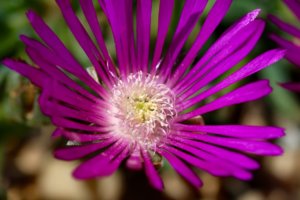
What do they say about going out in the midday sun? I try not to take my photographs in the glare of daytime sun but just like my armillary sphere, some plants demand it, only bothering to venture out with their beach towel and suncream when the sun is at it’s hottest
A warm day isn’t sufficient for this Cooper’s Ice Plant or delosperma cooperii – it needs strong sun for the shocking pink flowers to open their jolly faces.
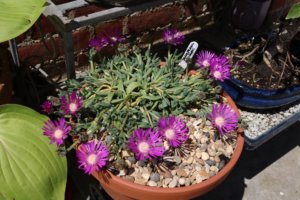
This is a new addition to my collection and I deliberately planted it at the back of the pot so that it will grow towards the sun, eventually covering this terracotta pan and spilling over the sides.
You can’t help but smile at these flowers. Optimistic is the best way to describe them.
Another sun worshipper
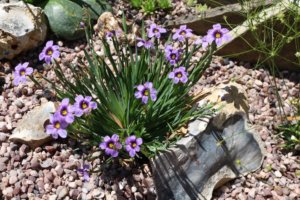
I’ve been trying to photograph this one for a couple of weeks now. It’s certainly not as fussy as the delosperma and is likely to hit the beach even on a slightly overcast day. But heading out with my camera at the end of the afternoon I’ve usually found it’s packed up it’s picnic and closed its petals.
This is also a recent purchase and is a dear little Sisyrinchium ‘E. K. Balls’. I love this royal purple colour and it’s spiky foliage arranged in an open bowl shape. I particularly like the colouring against this cracked flint found in my garden.
Himalayan Rose

When we bought our house, the seller was very keen to point out plants he was proud of. I was delighted to listen as he was a fantastic gardener and had planted so many wonderful plants and trees.
Top of his list was this rose, which he described as a Himalayan climber. Given it’s habit of scrambling 60ft into this larch tree, I am thinking it may be ‘Paul’s Himalayan Musk’ rose, although this is described at pale pink whereas I’d say mine in white.
Whatever it is, I think it’s 40+ years old and at the base you can see the thick branches that he had trained over a strong pergola support.
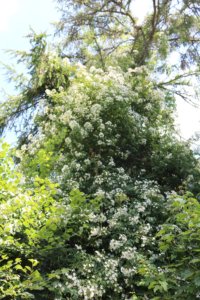
It also used to spread into a neighbouring larch which toppled in a storm, but failed to hit the ground, held as it was by several thick stems of the rose. This prevented it crashing over the neighbour’s fence and onto their cars. Phew.
Sweet peas
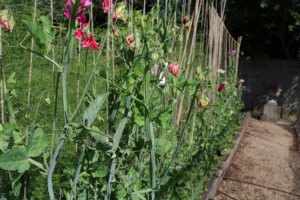
It’s a busy time of year for school-children and I’ve had my fair share of cricket matches, exams stresses, sports days and new school induction days to attend. It’s difficult to be in three places at once and I’ve called in many favours with friends.
Having a long line of productive and beautiful sweet peas to cut is a boon at this time of year. When a friend turns up frazzled on your doorstep to deliver back your child it’s lovely to have a little bunch of sweet peas to give them.
A dear friend took care of my dog this week and I gave her a bunch of sweet peas. She told me that her father used to raise sweet peas from seeds and grow them as cut flowers on his farm in Essex. She used to spend long days in the fields tying in and cutting the blooms.
She kindly gave me this picture of the rows and rows of sweet peas. The bunch of sweet peas I gave her took her back to long summer days on the farm, and the powerful scent of the blooms.
The twittersphere tells me that this is National British Flowers Week and there is a definite movement back to buying and growing British flowers.

This is the third year in a row that I’ve grown my sweet peas up strings, a method I described here. It’s delivering lovely, straight, untangled stems and many thank-you gifts.
Six on Saturday is a weekly meme – take a look at the comments at the base of host The Propagator to see more ‘sixes’ from other keen gardeners from all over the world.
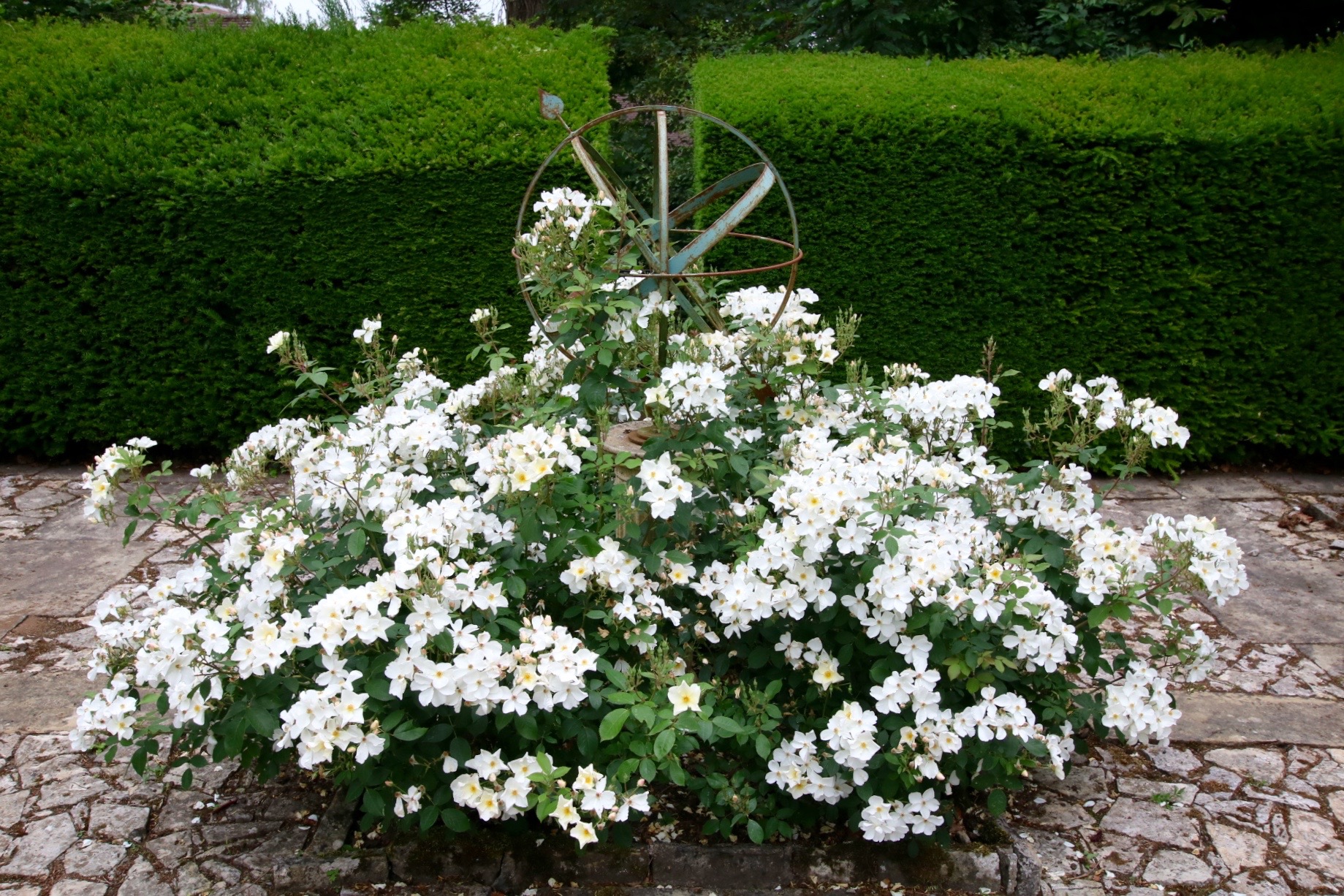

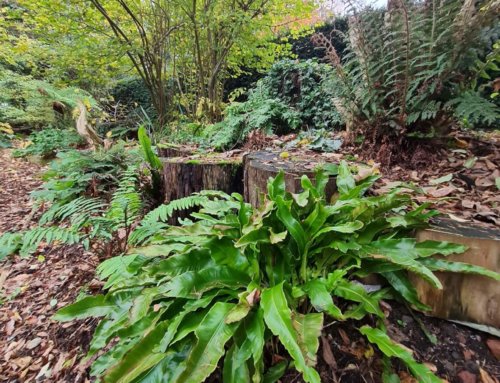
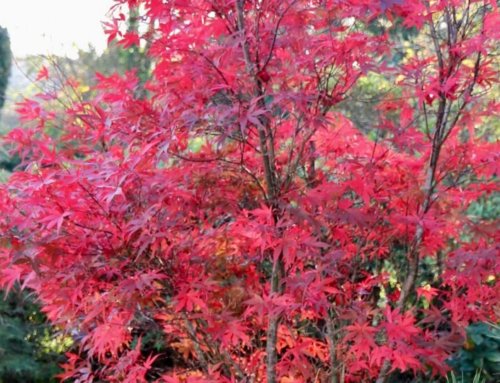
Thank you for the tutorial on setting up the support for the sweet peas. I suspect this will work better for my snap peas as well. I will try it next spring.
Thanks Mala – it is so easy and I’ve found it works really well. It also doesn’t take much space. The line of sweet peas photographed here run along a narrow strip alongside my asparagus. Hope you get to try it and that it works for you next season. I think take your idea and use it for other things too!
Riveting Six-on-Saturday! Very informative and quite tense in places – that rose clearly rescued what could have been an awful calamity! Suddenly, there are several perennial sweet pea plants this week. I have had no luck with standard sweet pea plants but this obliges every year, in fact, I cut back or pull up several shoots so that it is a bit more manageable.
Thanks for your lovely feedback. What was strange about the tree falling incident is that I went round to warn the neighbours to move their cars. I was worried that the rose wouldn’t hold the tree until the tress surgeons arrived and they chose not to move the cars. They obviously though the rose was strong enough and luckily it was! I love perennial sweet peas by the way.
H haven’t grown sweet peas this year. I’m missing their smell! That’s a fab picture from your friend.
I wish I could send you a bunch Ali!
Your sweet peas are delightful, and I enjoyed reading how you hand out sweet-smelling bouquets. I really can’t imagine not growing them!
I know, each year I’m glad I do. This year I’ve had to cut back on Veg as a building project has kept me too busy but I did make time for my sweet peas…
Love your sundial story and glad the sun shone for you this year! I think you are right that Paul’s Himalayan Musk is pink so maybe you have another variety? Great idea to swap sweet peas for favours – I have three children too and have run myself into the ground this week. Need to start snipping the sweet peas and calling in favours instead!
Yes – good plan. The children do keep me busy but it’s so lovely at the end of the day to get out in the garden and relax especially in this glorious weather.
Might your rose be Rosa brunonii? I’ve seen that doing 40 or 50 feet up a tree. I’ve had that Sisyrinchium for many years; it looks so insubstantial but it’s still there and has produced a few seedlings too. Great plant.
Jim – you’re a legend. I think you’re right. Glad to get an ID and the RHS website describes Rosa brunonii as a Himalayan Rose.
First year for me for sweet peas. Growing up two wigwams of 8′ canes. Reasonable accessible so getting fresh blooms daily. A milk jug is serving as a vase, must get some narrow vases for next year. I’ll be looking for some interesting seeds too, this year’s were random end of season sale jobs.
Those are big canes – how do you get them in the car!? There are some great sweet pea varieties out there. I love the blowsy Spencer types but interestingly all my friends are commenting on my deep purple ‘Almost Black’ variety. It’s velvety and has quite small flowers. Great scent too.
I’m late to comment … (WP doesn’t inform me when you post a blog … will have to subscribe I suppose)
I grew delosperma cooperii last summer with very good results. Many flowers of different colors. I was hoping that the seeds in the big pot would sprout this year but nothing until now…I think it’s too late to sow them and enjoy their flowering … Otherwise, very beautiful sweet peas climbing on your smart system !
Hey Fred. So glad you’ve checked in which is more than I can say as I am still yet to read your blog this week. You can subscribe but I don’t email subscribers every time I post anyway but save up for a newsletter every now and again. I will definitely grow more delosperma next year but now I’m thinking how best to overwinter them…
Thanks for compiling such nicest information in your blogs. Articles are very informative and hope again I’ll find more like that.
Thanks for your lovely comments and I’m so pleased that you’ve enjoyed reading my blog articles. I love all my plants and great enjoy sharing them with the world this way.